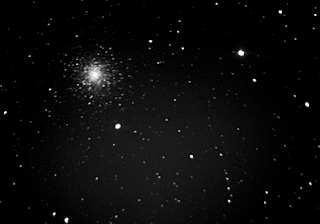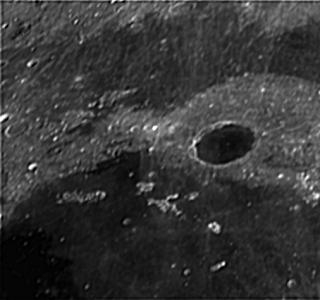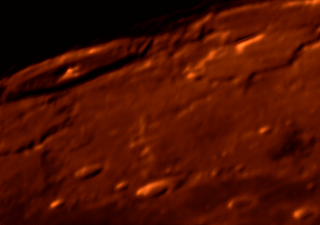 |
M15, f/6.3, 1x1 bin, 300mm aperture, 3048 focal length
4x20 sec exposure, Orion Parsec 8300M, 0.9"/pix plate scale
Webster, NY, 6/3/2011 4:00 AM EST, © Billy Vazquez |
There is much to learn about operating a telescope for scientific purposes or astrophotography than your typical night under the stars for casual observing. To the right, you see an image taken from VAO (Vazquez Astronomical Observatory) in Webster, NY on 6/3/2011 at 4:00 AM in the morning. I used a Meade LX200 12" telescope and Orion Parsec 8300M camera through a luminance filter. I used
MaximDL as the imaging software, binned at 1x1, 4x20 sec exposures, dark substracted, no flats, no auto-guiding. The images are the raw images stacked, registered and dark substracted with
CCDStack. I used
GIMP to modify the contrast and brightness of the resulting stacked image.
So what is so special about this image? Well lots of things! Lets enumerate some of the things I will talk about on this blog: Polar Alignment, Periodic Error Correction (PEC), Tracking, Signal To Noise Ratio and Vignetting.
First, in order to do accurate and precise imaging a telescope needs to be polar aligned. You might have heard that this is as simple as to point your telescope at Polaris (North Star) while your telescope is at the polar position. This is good enough for casual observing as it will give any GOTO mount the ability to point roughly to the area of the sky where your object of interest is. Unfortunately, Polaris is not exactly at the celestial north pole. What this means is that for imaging, you need to have your telescope precisely polar aligned. There are many methods to do this, the most popular is the drift polar align method and the
Kochab Clock Method. I used the drift method, assisted by
Pempro Polar Aligned Wizard. This is by far, the most time/effort consuming task I have ever done for any astronomical endeavor.
Next, Periodic Error Correction (PEC), all mounts are imperfect mechanical machines. Therefore, there are (in addition to drift from non-precise polar alignment) 2 sources of error while tracking a target. The first is RA periodic error, or the error of tracking in right ascencion. This error can be minimized (but never eliminated) by using PEC if your mount provides such a service. I used Pempro to program my mount to reduce this error. This is easier to do than polar alignment because of Pempro, but still requires considerable amount of time and patience. For example, I have reduced my mount RA error from 75 arcsec to 25 arcsec and it took me over 7 hours to do this. I still need to refine this error to bring it down to the single digits. Next, DEC periodic error, this one cannot be eliminated with Pempro. It is mostly due to 2 things, imprecise polar alignment and mechanical fluctuations like dynamical flexure. How do I deal with this? Well I have not yet and it clearly shows in the image. The image was taking without auto guiding, to see how good or bad the raw tracking of the mount is. Auto-Guiding and Adaptive Optics should help reduce the error on the declination axis.
Tracking, most GOTO mounts provide Sidereal Tracking, a fancy phrase for tracking stars as they move across the sky. The tracking of the raw mount is affected by many things, balance, mechanical imperfections of the gears, flexure and polar alignment to mention a few. The image above is an unguided exposure. This means that only the mount was trying to keep up with the movement of the stars across the sky over 20 seconds. That is why you see star trails and stars that look like ellipses instead of perfect circles. I was expecting this result, which is why I took the images in the first place. Considering the quality of the mount, the amount of RA error I still have and the exposure time of 20 seconds this is better than expected.
Signal to Noise ratio, is the ratio of the amount of light from celestial objects in your image vs. the amount of unwanted signal due to electronics of your CCD detector and other noise sources. I want to increase that ratio and the easiest way to do it is to add up images of the same object. For my image, I took 4 images of the same duration, 20 seconds. Then add them up. This should have incerased the SNR by approximately a factor of 2. The more images you stack the better your SNR is until you hit diminishing returns.
A great feature of this image is what we call Vignetting. Vignetting is caused by reducing the amount of light received by the CCD detector along the optical path. Basically, it is a shadow. You can see that the center of the image is brighter than the edges. How should I deal with this? Easy, taking flat exposures. Flats are images taken against an uniform light background. These images are stacked, combined and dark reduced to create an image that shows the lighting imperfections of the optics in your telescope setup. I did not do it for this image to see the effect.
And last
M15. Why did I choose M15? Well the honest truth is that it was 4:00 AM in the morning after a long night of trying to correct PEC and I wanted to see how good my polar alignment was, so I decided to do a few slews (moving the telescope from one point to another) to check my pointing accuracy. M15 was about 50 degrees East of my last position on the PEC run so I said... "Hey why not?" One slew later... I took a 5 second exposure and... BAM! M15 was right there. Not centered by any means, which means I will need to use
TPoint at some point to start correcting the pointing precision. But nonetheless, within 14 arcmin from the center of my field of view.











